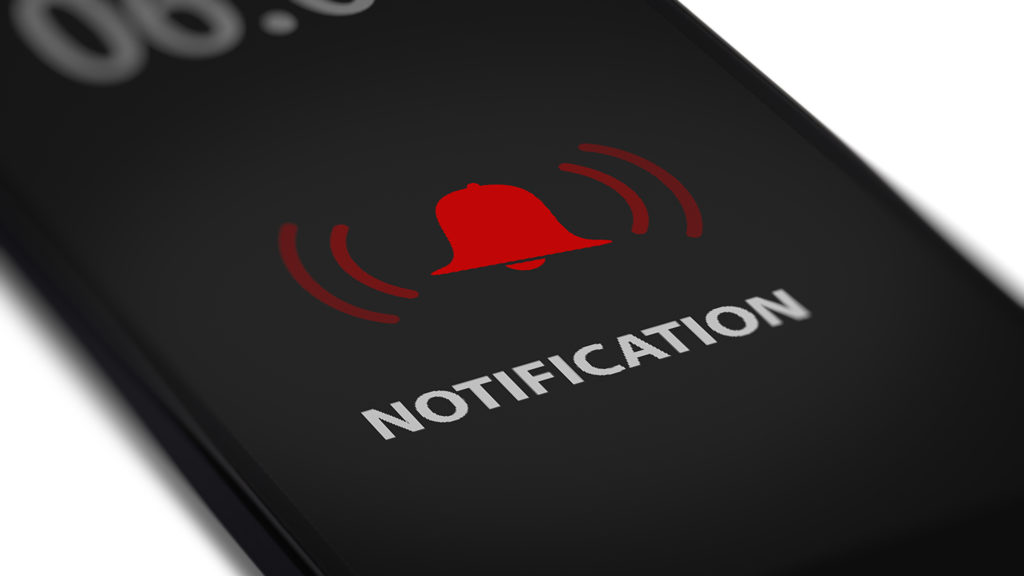By understanding how our brains work when we receive a push notification, MSc in Computer Information Systems student VANESSA VELLA has created a piece of software that can help thousands of people quickly regain focus.

If you work at a computer, then you will surely have experienced the interruption that comes with a notification: one minute you’re focusing on the task at hand, the next you’re scrolling through a seemingly endless list of posts. It happens to all of us, but the worst part about all this is how hard it can be to get back on track. For the past year, however, Vanessa has been working on a project that aims to help knowledge workers, with software developers in particular, easily get back on track thanks to a simple, yet effective software extension.
“Push notifications, which come from social media platforms, e-mails, weather apps, and other software, are important tools in keeping us aware and on top of things, but there are just too many of them nowadays,” Vanessa explains. “Even so, it’s hard for people to switch off their phones, go offline, or even disable notifications for fear of missing out, so what I wanted to do was create a way that would facilitate getting back to work, rather than removing notifications.”
To do this, Vanessa started working on a three-phase project. The first phase was to understand how people reacted to these notifications, how they felt about them, and what they found hardest to do once they got back to work. It also included extensive research into what literature related to this area said, and whether that applied to what the Maltese software developers surveyed had told her.
This led to the second phase, which was a controlled lab experiment that sought to understand how different types of notifications affected the workflow of users and how long it would take for them to get their focus back.
“We started by creating a website where software developers could undertake a code comprehension task, which involved a software code snippet and five questions related to it,” she continues. “Then, at some point during the task, each user was interrupted by one of the four different types of notifications.”
Each of these notifications required a different sort of pause for a different purpose, with the aim being the understanding of how each affected the focus of the user. The four notifications were made up of the ‘actionable intrusion’, which was an unrelated riddle that froze the screen and didn’t allow participants to return to the task; the ‘actionable intervention’, which asked users if they wanted to go through a tutorial of how the task at hand needed to be completed; the ‘informational intervention’, which offered users notes on their task; and the ‘informational intrusion’, which presented them with a fact about Ada Lovelace (the world’s first programmer).
“During this experiment, we also generated heatmaps from tracked mouse movements,” Vanessa continues. “The data from these two things showed us how long it took users to get back into a state of flow.”
It quickly became evident that the ‘actional intrusion’ (the riddle), which was completely unrelated to the task, was the type that took users the longest to regain focus from; while the ‘informational intervention’ (the notes), which was related, made it easy for them to get back on track. Moreover, through the heatmap, Vanessa realised that when faced with the ‘actional intervention’ (the tutorial) users aggressively scrolled up and down, which she later realised was the result of the tutorial making them question whether what they had done had been correct.
With this information in hand, Vanessa could proceed to phase three, which saw her create a cognitive stack-trace (a list with the most recently changed code at the top).
“When human beings write – be it content or software – we naturally write for a bit and then pause to think; it’s simply how our working memory operates. However, when we stop for a longer period of time – to make a coffee or, in this case, read a notification – we may completely lose track of where we were or what we were meant to do next.
“So, by using this knowledge and the information gathered in phase two, I designed a cognitive stack-trace which could be added to IDE [a software used to write code]. This extension would automatically list a number of actions previously taken by the user in between short breaks or before long ones.”
Finally, through a participatory design process, where she took on board feedback derived from actual users of this extension, Vanessa updated the software to further divide the actions by colour and position in order to make them understandable at a glance. Meanwhile, in-program linking means that clicking on an item in the list will automatically take you to that part of the code.
Although this is a deceptively simple solution, it shows just how understanding notifications could completely change the way we work. Indeed, such an extension could in the future be used by many professionals using a variety of software including Microsoft Word and Excel. The best part, of course, is that this would lead to better workflow for users, thus saving professionals time throughout their day.

“Although this is a deceptively simple solution, it shows just how understanding notifications could completely change the way we work.”
The research work disclosed in this article is partially funded by the Endeavour Scholarship Scheme (Malta). Scholarships are part-financed by the European Union – European Social Fund (ESF) – Operational Programme II – Cohesion Policy 2014-2020 “Investing in human capital to create more opportunities and promote the well-being of society”.

